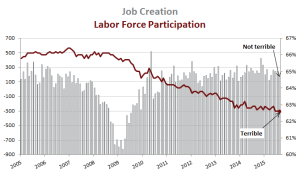
If your brand is taken over by another company or your company takes over other brands, either as a stand-alone buy or as part of a broader merger and acquisition, what aspects of your current brand should stay as they are and what might you look to change?
Many brands find themselves caught in a change of ownership. Sometimes there is no choice in what is left alone. For example, if a company is acquired by a major power brand, the chances of other brands remaining within the stable are small. If, on the other hand, either the acquirer or the acquired runs a house of brands, there are a number of things to weigh.
Six aspects for deciding what to do with the brand(s) you have:
1. The Circumstances Of The Sale – was the brand flourishing or declining when the sale took place? A strong brand could of course be a key reason for the sale, in which case customers should see as little change as possible. If on the other hand, the brand was weak or weakening, then a change of ownership is a good opportunity to revamp the strategy for that brand (to align with the intentions of the new owner) and perhaps to rebrand to clearly signal this shift.
2. The Equity Of The New Owner’s Brand – this too is all about sending the right signals. For companies looking to visibly expand their presence through acquisition, the lesser brand is likely to change, or at least align, with the new owner. If on the other hand, the new owner is running a managed portfolio (where brands look independent and live or die on their ability to hit their goals) or the owner’s own brand is not visible to consumers (or is meaningful only to investors), then things should probably be left as they are. That can mean making hard decisions about which brand is best suited to the consumer-facing environment, supplanting ego for recognition. Too many brands in my view try to marry brand names through dual branding. While they may believe they are achieving the best of both brands, my personal view is that they are compromising all ways round.
3. The Make-up Of The New Brand Portfolio – When companies with similar product lines join forces, it’s critical that the new portfolio is streamlined and cohesive. That in itself may be a reason to change or keep the brand as is. To decide which brands stay and which go: Discard, sell or merge redundant brands, Identify the brands that contribute the most to your purpose (make these the core of your portfolio), Where you have two strong brands in one category, assign different parts of the market to each brand and reposition accordingly.
4. The New Target Audience – companies looking to use acquisition to change or expand their customer base will need to consider very carefully which brand is most likely to be most attractive to the target audience looking ahead. The opportunity here – and it’s generally an underplayed one in my experience – is to draw the customers of the lesser brand into the fold of the future brand by presenting them with a clear and inspiring vision of how they stand to benefit. Too often, this doesn’t happen. Companies talk about their perspective of why change is important, using phrases and reassurances that are tired, irrelevant and hollow. No-one cares about the fact that you’re bigger or that you have this much in assets. That means nothing to consumers. At all.
5. The Wider Market Environment Post-Sale – what has the sale of the brand done to the dynamics of the competitive landscape? If, for example, the brand is now part of a bigger group with a strong market position, that change has not only potentially enhanced the standing of the brand under new owners but also weakened the relative position of others. Or the change may have stiffened their resolve to compete more vigorously. In which case, will the current brand, under the new arrangement, be strong enough to compete meaningfully in this new environment? It could well be. Or it may require a shift in brand architecture – for example, from a stand-alone brand to an endorsed brand – in order to better meet the new dynamics that have been created.
6. The People Behind The Brand – Who will your people rally to? So often, companies just impose brand change on the culture without enough consideration for what their people stand to lose or gain psychologically from the shift. They focus on the corporate restructure at the expense of the emotional restructure. By failing to leverage the legacy of the existing brand, or the excitement and strength of the new, they often lose the transformational opportunity that a change in brand ownership represents.
What you will do with the brand(s) you acquire is a critical consideration for every company looking to take over another’s assets. You have after all probably paid good money for them. Understanding the value they have, and the value they could have, or will never achieve, is vital to turning balance-sheet goodwill into margin-enhancing brand equity. Too often, companies make decisions after the brands themselves have been acquired and based on policy or structure rather than carefully thinking through ahead of time how they can achieve the greatest emotional impact in their markets and for their customers, current and future.
The Blake Project Can Help: We have extensive experience helping organizations make key decisions that help ensure successful mergers & acquisitions.
Branding Strategy Insider is a service of The Blake Project: A strategic brand consultancy specializing in Brand Research, Brand Strategy, Brand Licensing and Brand Education
FREE Publications And Resources For Marketers








 Here’s something we learned last week in LA: Blink, the best-seller from TED favorite Malcolm Gladwell, will be made into a feature film, adapted/directed by Stephen Gaghan (“Traffic”), and starring Leonardo DiCaprio. Gladwell will stay involved as executive producer. We’re great fans of Blink — and, let’s face it, just about anything Gladwell writes — so we were curious to hear what he had in mind for the movie. He tells us, “It takes a single character from Blink — Silvan Tompkins — and fashions an entirely new story around him, about what it means to be someone who can read other people’s thoughts.” Our snap judgment says: Success.
Here’s something we learned last week in LA: Blink, the best-seller from TED favorite Malcolm Gladwell, will be made into a feature film, adapted/directed by Stephen Gaghan (“Traffic”), and starring Leonardo DiCaprio. Gladwell will stay involved as executive producer. We’re great fans of Blink — and, let’s face it, just about anything Gladwell writes — so we were curious to hear what he had in mind for the movie. He tells us, “It takes a single character from Blink — Silvan Tompkins — and fashions an entirely new story around him, about what it means to be someone who can read other people’s thoughts.” Our snap judgment says: Success. sauces. Turns out that at the same conference he bumped into another TEDster who wanted to talk to him about cookies. The result: another great story that the New Yorker just released to the Internet, starring Steve Gundrum of Mattson (and his colleague Barb Stuckey, who joins in February for the first time).
sauces. Turns out that at the same conference he bumped into another TEDster who wanted to talk to him about cookies. The result: another great story that the New Yorker just released to the Internet, starring Steve Gundrum of Mattson (and his colleague Barb Stuckey, who joins in February for the first time).












